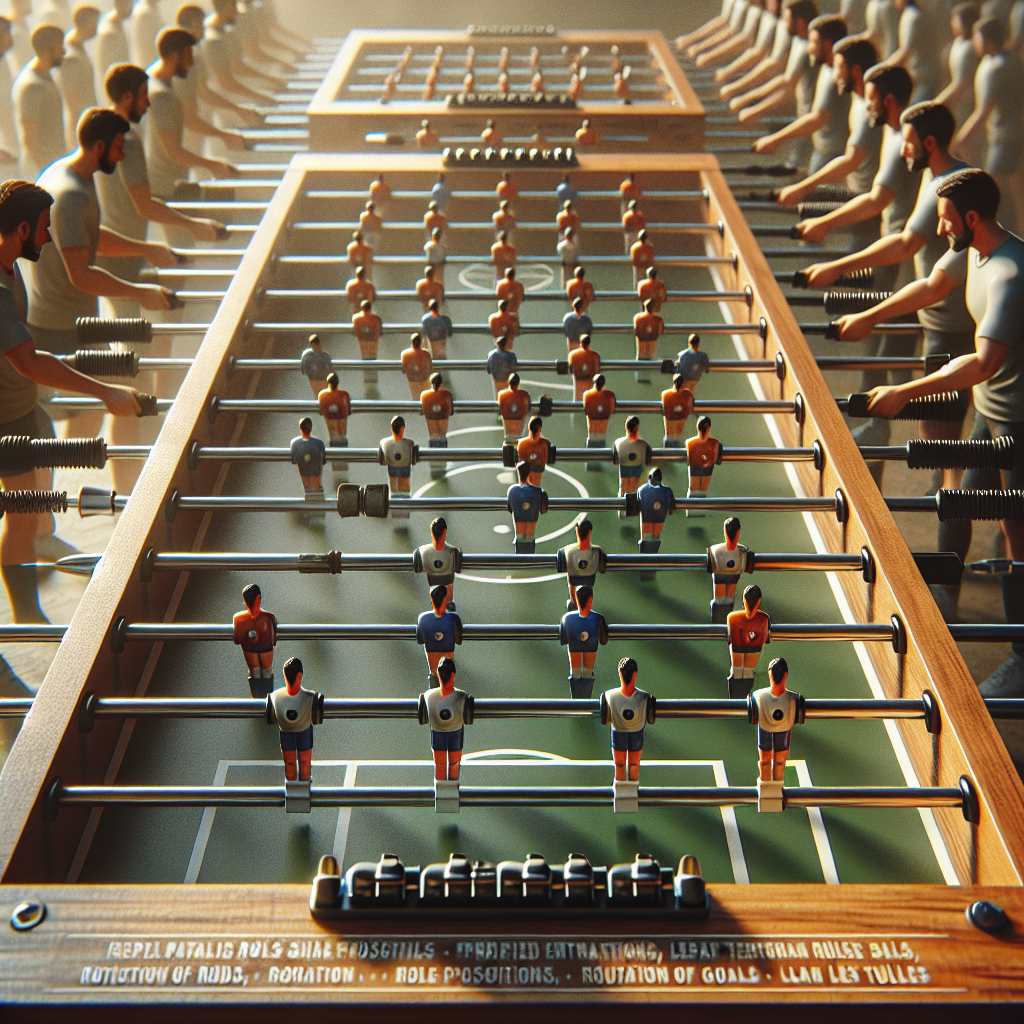Essential Dartboard Rules
When it comes to playing darts, understanding the essential dartboard rules is crucial. This section will cover the dartboard setup standards and distance measurements that need to be followed for a fair and accurate game.
Dartboard Setup Standards
To set up a dartboard properly, there are specific standards that should be followed. The regulation dartboard height places the bullseye at 5 feet 8 inches (1.73 meters) from the floor for both soft tip and steel tip darts. The official measurements for dartboard height from the floor to the center of the bullseye internationally is also 5 feet 8 inches (1.73 meters) for both electronic and steel tip dartboards (GLD Products). It’s essential to ensure that the dartboard is mounted securely and at the correct height to maintain consistency in gameplay.
Distance Measurements
In addition to the dartboard height, the distance between the dartboard and the throwing line, also known as the oche or toe line, is important to maintain fairness in the game. The official distance from the front of the dartboard to the back of the throw line is 7 feet 9.25 inches (237 centimeters) for steel tip darts (Shot Darts). For soft tip darts, the distance is 8 feet (243.84 centimeters) (Shot Darts). Adhering to these measurements ensures that all players have an equal opportunity to throw their darts.
To summarize:
- Dartboard Height: 5 feet 8 inches (1.73 meters) from the floor to the center of the bullseye.
- Distance: 7 feet 9.25 inches (237 centimeters) for steel tip darts and 8 feet (243.84 centimeters) for soft tip darts.
By following these dartboard setup standards and distance measurements, you can ensure a fair and enjoyable game of darts. Proper setup is essential for accurate scoring and maintaining the integrity of the game. For more detailed rules and regulations, refer to the official darts rules and darts rules and regulations.
Understanding Dartboard Segments
To fully grasp the intricacies of dartboard rules, it’s important to understand the different segments of a standard dartboard. These segments include the numbered segments and the bullseye.
Numbered Segments
A standard international dartboard consists of 20 numbered segments arranged in a circular pattern. Each segment is shaped like a pie slice and is of equal size. The numbers on the segments range from 1 to 20, providing players with various scoring opportunities. The placement of the numbers is strategically designed to challenge players and reduce the element of chance. For instance, small numbers are placed on either side of large numbers to encourage accuracy by punishing inaccuracy. Here’s a table showcasing the numbered segments on a standard dartboard:
| Segment | Value |
|---|---|
| 1 | 1 |
| 2 | 2 |
| 3 | 3 |
| 4 | 4 |
| 5 | 5 |
| 6 | 6 |
| 7 | 7 |
| 8 | 8 |
| 9 | 9 |
| 10 | 10 |
| 11 | 11 |
| 12 | 12 |
| 13 | 13 |
| 14 | 14 |
| 15 | 15 |
| 16 | 16 |
| 17 | 17 |
| 18 | 18 |
| 19 | 19 |
| 20 | 20 |
Table based on standard dartboard numbering.
Bullseye Breakdown
The bullseye is the central part of the dartboard and serves as a high-scoring area. It consists of two distinct sections: the inner bullseye and the outer bullseye.
The inner bullseye is the smaller, innermost circle of the bullseye. In most cases, it is marked with the number 50. Hitting the inner bullseye awards the player 50 points.
The outer bullseye surrounds the inner bullseye and is usually marked with the number 25. Hitting the outer bullseye awards the player 25 points.
Here’s a breakdown of the bullseye:
| Bullseye Section | Value |
|---|---|
| Inner Bullseye | 50 |
| Outer Bullseye | 25 |
Table based on standard dartboard bullseye sections.
The bullseye is a challenging target that requires precision and accuracy. Its placement at the center of the dartboard adds an element of excitement to the game. Understanding the scoring potential of the bullseye is crucial for achieving high scores and winning matches.
As you progress in your dart-playing journey, a solid understanding of the numbered segments and the bullseye will serve as a foundation for mastering various dart game variations. Whether you’re playing 501 Darts or Cricket, knowing how to navigate the dartboard segments will greatly enhance your performance.
Dartboard Mounting Techniques
When it comes to setting up a dartboard, proper mounting techniques are essential to ensure fair and accurate gameplay. In this section, we will explore two common dartboard mounting techniques: hanging the dartboard and dartboard mounting innovations.
Hanging the Dartboard
To hang a dartboard, it’s crucial to follow the official dartboard height and distance regulations to ensure a level playing field. The regulation height places the bullseye at 5 feet 8 inches (1.73 meters) from the floor, and the regulation distance from the dartboard face is 7 feet 9-1/4 inches (for steel tip darts) or 8 feet (for soft tip darts). These measurements are internationally recognized and followed in official dart competitions.
To hang the dartboard, follow these steps:
- Locate a suitable wall space that meets the proper height and distance requirements.
- Use a measuring tape to ensure accurate placement.
- Mark the desired height on the wall, measuring from the floor to the center of the bullseye.
- Align the bullseye with the marked spot on the wall and use a level to ensure the board is straight.
- Install a wall bracket or mounting bracket securely to the wall.
- Hang the dartboard on the bracket, making sure it is stable and properly aligned.
Remember, the stability of the dartboard is crucial for accurate gameplay. Ensure that the mounting surface is sturdy and that the dartboard is securely attached to the wall.
Dartboard Mounting Innovations
In addition to traditional hanging methods, there have been innovations in dartboard mounting that offer added convenience and flexibility. One such innovation is the use of adjustable dartboard brackets. These brackets allow you to easily adjust the height and angle of the dartboard, providing a customizable experience for players of varying heights and throwing styles.
Another mounting innovation is the use of dartboard cabinets. These cabinets not only provide a stylish and protective housing for the dartboard but also offer a convenient way to mount and display the board. Dartboard cabinets often come with built-in scoreboards and storage compartments for darts, making them a popular choice for home game rooms and recreational spaces.
When considering these mounting innovations, it’s important to ensure that they still adhere to the official dartboard height and distance regulations. This ensures that the gameplay remains fair and consistent, regardless of the mounting method used.
By following proper dartboard mounting techniques, you can create a suitable playing environment and enjoy accurate and competitive gameplay. Whether you choose to hang the dartboard using traditional methods or explore innovative mounting options, prioritize the adherence to official measurements to maintain the integrity of the game.
Dart Game Variations
Darts is not limited to a single game; it offers a variety of game variations, each with its own set of rules and objectives. In this section, we will explore two popular dart game variations: 501 Darts and Cricket.
501 Darts
In 501 Darts, players start with a score of 501 and aim to count down until they reach a final score of 0 by hitting different segments of the dartboard with varying values. The general rule for the positioning of the dartboard in a game of 501 Darts is 5 foot 8 inches from the floor to the bullseye (Darts Corner).
The objective in 501 Darts is to reduce the score from 501 to 0 as quickly as possible. Players take turns throwing three darts each, deducting the score achieved from their current total. The game continues until one player reaches exactly zero or goes below zero. The minimum number of darts that can be thrown throughout a game of 501 Darts is 9 before someone can be declared the champion (Darts Corner).
One of the most exciting moments in a game of 501 Darts is achieving a maximum score of 180. This is accomplished by throwing all three darts into the triple ring under the number 20. It is a remarkable feat that showcases precision and skill (Darts Corner).
Cricket and Other Games
Cricket is another popular dart game variation. In Cricket, players aim to “close” specific numbers on the dartboard and accumulate the highest point score. The goal is to hit three of a specific number or the bullseye to close it, and once closed, that number or bullseye becomes worth points for the player who closed it. The player who closes all the numbers and has the highest point total becomes the winner.
Aside from 501 Darts and Cricket, there are numerous other dart game variations, each with its own unique rules and strategies. Some popular examples include Around the Clock, Shanghai, and Killer. Exploring these games can add excitement and variety to your dart-playing experience.
Remember, understanding the specific rules of each game variation is essential to fully enjoy and participate in dart competitions. Whether you prefer the strategic challenge of 501 Darts or the competitive nature of Cricket, darts offers a wide range of game options to suit different skill levels and preferences.






